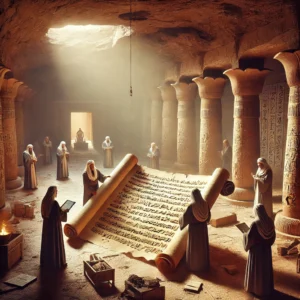Cairo, Egypt — A startling discovery in a remote Egyptian monastery has sent ripples through the world of biblical scholarship. Hidden within a stone chamber, a manuscript written in Coptic has been unearthed, and preliminary analyses suggest it could be a previously unknown gospel.
The manuscript, believed to date back to the 2nd century AD, contains narratives of Jesus’ teachings, parables, and miracles not found in the four canonical Gospels. Early studies of the text reveal a focus on themes of compassion and forgiveness, with passages that portray Jesus interacting with marginalized individuals such as lepers, widows, and prisoners.
“If authenticated, this could significantly reshape our understanding of early Christian theology,” said Dr. Nina Mansour, an expert in ancient manuscripts at the University of Cairo. “It may provide insights into the diversity of beliefs among the first followers of Jesus.”
The manuscript was preserved thanks to the dry desert climate and meticulous care by the monastery’s monks, who likely hid it during times of religious turmoil. Alongside the manuscript, researchers found fragments of early liturgical texts and a collection of ancient icons.
Scholars are now working to translate and digitize the text, with plans to publish their findings in a peer-reviewed journal. “This is a treasure trove for historians and theologians,” said Dr. Mansour.

